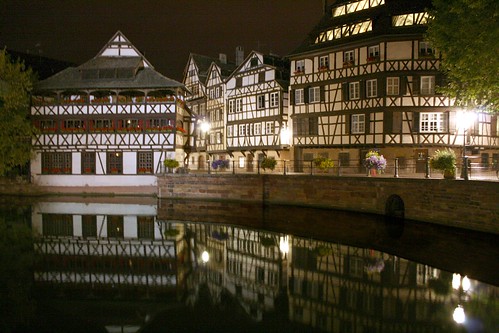skip to main |
skip to sidebar
Elections are held every five years, and every EU citizen is entitled to vote, and to stand as a candidate, wherever they live in the EU. The latest elections were in June 2009. Parliament thus expresses the democratic will of the Union's citizens (more than 490 million people), and represents their interests in discussions with the other EU institutions. The present parliament has 736 members from all 27 EU countries.
- Find out what I'm doing, Follow Me :)
Le Petit Chateau Pourtales
Posted by
Prime Minister
on Monday, September 28, 2009
Labels:
Around Strasbourg
/
Comments:
Le Petit Chateau Pourtales
2009-09-28T02:18:00-07:00
Prime Minister
Around Strasbourg|
Comments
)
Alsace House Style
There has been and there remains today a strong Germanic influence on the architecture found in the Alsace region of France. Alsace house types and the materials used can be categorized in the wide German «pan de bois» (half-timbering) architectural family. This architectural family uses many local symbols and decorations. These symbols appear on porches, doors and on the pieces of wood used to make the half-timbered walls.
Due to the climate the roof of the typical Alsace property is predominantly steeply pitched (up to 60 degrees) and the typical roof covering is flat clay tiles (tuiles écaille alsaciennes) which are specific to the Alsace and neighbouring areas of north eastern France. Tuiles écaille alsaciennes tiles are also called “queue-de-castor” tiles, this refers to their shape, similar to that of a beaver tail. This type of tiles is also common in the Jura, Savoie, southern Germany and in Switzerland.
Houses in the Alsace plains traditionally have an enclosed courtyard not directly accessible from the street and are traditionally positioned next to each other, forming almost neverending streets. Houses in the Outre-Forêt and Sundgau areas of Alsace posess open courtyards and are of a monobloc construction style.
Houses in the Alsace plains traditionally have an enclosed courtyard not directly accessible from the street and are traditionally positioned next to each other, forming almost neverending streets. Houses in the Outre-Forêt and Sundgau areas of Alsace posess open courtyards and are of a monobloc construction style.
Strasbourg Main Cathedral - A Handmade Miracle
Posted by
Prime Minister
on Sunday, September 20, 2009
Labels:
Centre Ville
/
Comments:
Strasbourg Main Cathedral - A Handmade Miracle
2009-09-20T07:06:00-07:00
Prime Minister
Centre Ville|
Comments
)
Strasbourg Cathedral or the Cathedral of Our Lady of Strasbourg (French: Cathédrale Notre-Dame-de-Strasbourg, German: Liebfrauenmünster zu Straßburg) is a Roman Catholic cathedral in Strasbourg, France. Although considerable parts of it are still in Romanesque architecture, it is widely considered to be among the finest examples of high, or late, Gothic architecture. Erwin von Steinbach is credited for major contributions from 1277 to his death in 1318.
European Parliament in Strasbourg
Posted by
Prime Minister
on Saturday, September 19, 2009
Labels:
European Parliament
/
Comments:
European Parliament in Strasbourg
2009-09-19T08:08:00-07:00
Prime Minister
European Parliament|
Comments
)
As you all know, Strasbourg is the capital of Europe because we have here a lot of European Institutions such like Europen Court of Human Rights, Council of Europe and The European Parliament.
The European Parliament (EP) is elected by the citizens of the European Union to represent their interests. Its origins go back to the 1950s and the founding treaties, and since 1979 its members have been directly elected by the people they represent.Elections are held every five years, and every EU citizen is entitled to vote, and to stand as a candidate, wherever they live in the EU. The latest elections were in June 2009. Parliament thus expresses the democratic will of the Union's citizens (more than 490 million people), and represents their interests in discussions with the other EU institutions. The present parliament has 736 members from all 27 EU countries.
Strasbourg's St Paul Church
Posted by
Prime Minister
on Friday, September 18, 2009
Labels:
Centre Ville
/
Comments:
Strasbourg's St Paul Church
2009-09-18T06:25:00-07:00
Prime Minister
Centre Ville|
Comments
)
St Paul's Church was built between 1892 and 1897 by the architect Louis Muller (1842 - 1898), to be used as the protestant garrison church for the German army, after the annexation of Alsace to the German Empire in 1871.
situated in the center of Strasbourg St Paul is under construction at the moment, but is still available for visits.
Ad Place!
StrasbourgDaily All Rights Reserved. Blogger Template created by Deluxe Templates
Wordpress Theme by Skinpress | Supported by Dante Araujo










